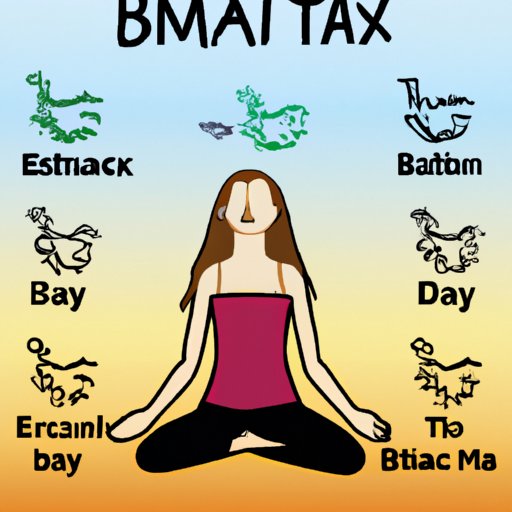Introduction
When it comes to exercise, most people are focused on their physical movements and body mechanics. However, controlling your breath is equally important when it comes to getting the most out of your workout. By being mindful of your breathing, you can increase the intensity of your workouts and maximize the benefits of each session.
Controlled breathing during exercise not only helps you stay focused and energized, but it can also improve your heart rate, blood pressure, and overall performance. There are many techniques that you can use to help regulate your breath, and understanding the timing of inhalation and exhalation is key to getting the most out of each session.
The Timing of Breathing During Exercise: When to Inhale and Exhale
When it comes to breathing during exercise, there are two main techniques that you should focus on: inhalation and exhalation. Inhalation is the act of taking in air, while exhalation is the act of releasing air. Both of these processes are essential for a successful workout, as they help to keep your body oxygenated and provide energy.
Different types of exercise require different techniques for inhalation and exhalation. For example, when doing aerobic exercises such as running or cycling, you should generally inhale when you are exerting force, and exhale when you are in a relaxed state. On the other hand, when doing strength-training exercises such as weightlifting or calisthenics, you should generally exhale when you are exerting force, and inhale when you are in a relaxed state.
The Art of Breathing During Exercise: A Step-by-Step Guide
Now that you understand the basics of inhalation and exhalation, it’s time to put them into practice. Here is a step-by-step guide on how to properly control your breath during a workout:
Getting into Position
Before you start your workout, it is important to get into the correct position. This will allow you to breathe more deeply and effectively. Stand up straight with your feet shoulder-width apart, chest lifted, and shoulders back. You should be able to feel the natural expansion and contraction of your rib cage as you breathe.
Understanding the Rhythm of Your Breath
Once you are in the correct position, it is important to understand the rhythm of your breath. Try to keep your breaths even and steady throughout your workout. This will help you maintain a consistent level of energy and intensity.
Practicing Diaphragmatic Breathing
Diaphragmatic breathing is a type of deep breathing that helps to activate the muscles in your abdomen and lower back. To practice this technique, take a deep breath in through your nose, filling your lungs and expanding your stomach. Then, slowly exhale through your mouth, using your abdominal muscles to push the air out. Repeat this process several times until you feel comfortable with the technique.

What You Need to Know About Inhaling and Exhaling During Exercise
Now that you understand the basics of controlled breathing during exercise, here are some additional tips to keep in mind:
Benefits of Controlled Breathing
Controlled breathing during exercise has numerous benefits, including increased oxygen intake, improved concentration, and enhanced performance. Additionally, it can help reduce stress and anxiety, allowing you to stay focused and energized throughout your workout.
Tips for Maintaining Proper Form
It is important to maintain proper form while controlling your breath during a workout. Be sure to keep your chin tucked, shoulders relaxed, and back straight. Additionally, try to keep your breathing even and steady throughout the entire exercise.
Common Mistakes to Avoid
One of the most common mistakes people make when controlling their breath during exercise is holding their breath. This can lead to dizziness and fatigue, so be sure to keep your breaths even and steady. Additionally, try to avoid shallow breathing, as this can limit the amount of oxygen your body receives.
Conclusion
Controlling your breath during exercise is an essential part of any workout. By understanding the basics of inhalation and exhalation, different types of exercise, and tips for proper form, you can maximize the benefits of each session and get the most out of your workout.


